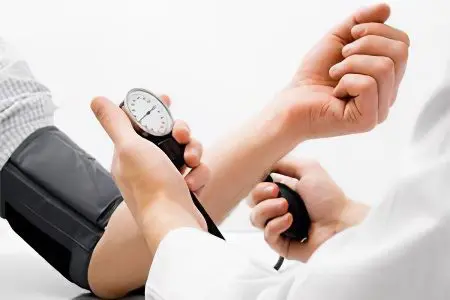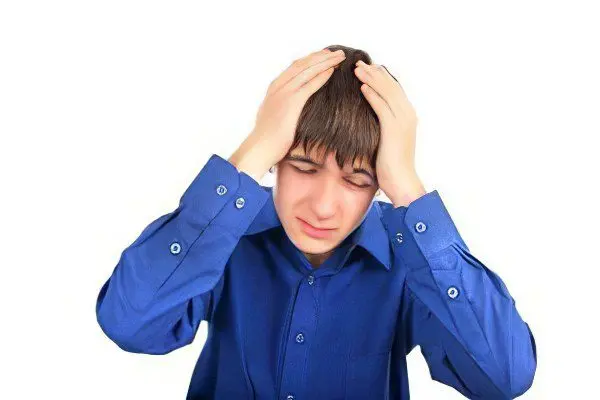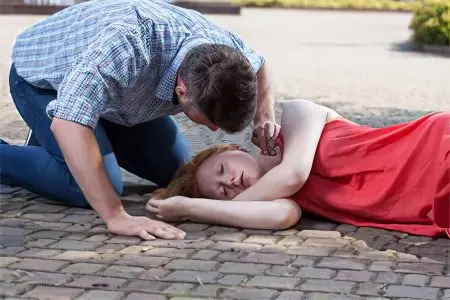Contents

Hypotension is a persistent or intermittent drop in systolic and diastolic blood pressure below normal. We can talk about arterial hypotension when the pressure drops to the level of 100/60 mm. rt. Art.
Hypotension is manifested by dizziness, vision problems, increased fatigue and weakness, excessive drowsiness and other symptoms. Therapy is built on the basis of drug and non-drug correction.
According to statistics, women suffer from hypotension more often than men. Often diagnosed with a decrease in blood pressure in adolescence. In older people, it makes sense to talk about atherosclerotic hypotension, which occurs against the background of atherosclerotic vascular damage and loss of vascular tone.
Hypotension is a rather heterogeneous syndrome, since there are cases when low blood pressure is the only sign of a person’s ill health. At the same time, his health remains absolutely normal. However, in the vast majority of cases, hypotension is still a pathological symptom.
Causes of hypotension

The causes of hypotension are multiple, since a drop in blood pressure can occur under a variety of physiological and pathological conditions of the human body.
Among the leading causes of arterial hypotension, the following factors can be identified:
Neurocircular dystonia. Scientists consider this complex of cardiovascular disorders of a functional nature to be the most fertile ground for the occurrence of hypotension. According to experts, neurocircular dystonia leads to hypotension in 80% of cases;
One of the leading roles in the development of hypotension is assigned to severe stress and long-term current situations that traumatize the psyche. In the occurrence of primary hypotension, chronic overwork, depressive moods and inadequate night’s rest are directly involved;
Hypotension may be the result of diseases already present in a person, including:
Dumping syndrome after gastric resection, gastric ulcer;
Myocarditis, cardiomyopathy, arrhythmia, heart failure;
Violation of the work of the peripheral nervous system against the background of diabetes mellitus (neuropathy of diabetic origin);
Hypothyroidism;
Diseases of an infectious nature;
Benign and malignant tumors;
Spinal injuries and other diseases.
Massive bleeding, dehydration of the body lead to a sharp drop in blood pressure;
Hypotensive reflexes can work when you get a serious injury, in case of poisoning, anaphylactic shock;
The pressure reduction mechanism is also launched in case of a sudden violation of cardiac activity;
Vitamin deficiency can lead to the development of hypotension. Especially in this regard, a deficiency of vitamins C, E and B is dangerous;
Hypotension is often the result of debilitating diets;
Taking certain medications can cause a drop in blood pressure. In this regard, one should be more careful about the use of drugs for the treatment of high blood pressure;
Physiological hypotension can occur even against the background of absolute health, if there is a hereditary predisposition to it. Such hypotension is recorded with sudden changes in the weather, with increased physical activity. Often low pressure is observed in trained athletes;
Too long a night’s rest can lead to an excessive decrease in blood pressure. It has been established that in healthy people, the level of pressure during sleep drops by 10-20%. If the pressure drops by more than 20%, then it can be dangerous, especially for older people. Specialists attribute such a drop to endogenous disorders of neurohumoral regulation.
There are many reasons that can provoke hypotension.
However, the mechanism of its development is always associated with 4 main factors, including:
Weakening of peripheral vascular resistance. This occurs mainly in anaphylactic shock, with a collapse of a toxic or infectious genesis;
Reduction of cardiac output (shock and minute). This is often observed in severe lesions of the heart, for example, with myocardial infarction, with severe arrhythmias, etc.;
Reducing the volume of circulating blood in the body. The main reasons in this case are blood loss during internal or external bleeding;
Deterioration of the venous blood supply to the heart. The cause of this condition may be pleurisy, or massive ascites.
Symptoms of Hypotension

If the decrease in blood pressure is of a physiological nature, then, as a rule, a person does not notice the symptoms of hypotension. In other cases, the clinical picture of the disease will vary, so it is more rational to consider the signs of pathology based on its genesis.
Symptoms of orthostatic hypotension
The symptoms of orthostatic hypotension are especially pronounced in the elderly. A drop in pressure is observed over several minutes when a person moves from a horizontal position to a vertical one. In this case, systolic pressure decreases by 20 mm. rt. Art., and diastolic – 10 mm. rt. Art.
Against the background of orthostatic hypotension, the patient experiences symptoms such as:
Dizziness;
Weakness;
Unsteadiness of gait, up to the possibility of falling;
visual disturbances;
Interruptions in the work of the heart.
In rare cases, panic attacks and fainting are observed.
Symptoms of postprandial hypotension

This form of hypotension is typical for healthy people. Most often it is observed in old age. The drop in blood pressure occurs after eating, usually within 2 hours of eating. If a person has no other diseases, then, as a rule, he does not notice the symptoms of hypotension.
However, against the background of cerebrovascular pathologies, the following symptoms may appear:
Nausea;
General weakness;
Speech and vision disorders;
Disorder of consciousness.
All these symptoms a person can independently associate with food intake.
Hypotension due to stress and physical overwork

Hypotension against the background of stress, active physical and intellectual activity is most often observed in athletes, as well as in patients with diabetes mellitus or circulatory pathologies.
Symptoms of a drop in blood pressure during mental and physical overstrain are as follows:
sudden weakness;
Dizziness;
Darkening in the eyes;
Numbness of the extremities, feeling of “cotton” legs.
Essential hypotension

This is primary hypotension, which is characterized by persistent symptoms and most often occurs in young women.
The clinical picture of primary hypotension is as follows:
All patients complain of headaches, fatigue and dizziness. These symptoms disappear if the pressure rises;
Patients are prone to increased anxiety and depressive moods;
There are disorders of the autonomic nervous system. So, periodically a person has an unmotivated feeling of heat or cold, numbness of the limbs, increased sweating;
A third of men with hypotension have problems with potency;
About 50% of patients suffer from regular panic attacks, fainting, orthostatic insufficiency;
Doctors often hear complaints about heart failure. Patients suffer from shortness of breath, which most often occurs at the peak of emotional excitement or against the background of severe overwork.
The course of such hypotension is undulating. People depend on meteorological conditions, on the intensity of loads in everyday life. Often with age, such hypotension disappears.
Symptoms of secondary hypotension
Secondary hypotension occurs against the background of existing diseases, of which there are a huge variety. It is the symptoms of the underlying disease that come to the fore. At the same time, patients note weakness, drowsiness, fatigue, headaches, cognitive impairment, sweating of the feet and palms.
Why is hypotension dangerous?

Primary hypotension usually has a favorable prognosis. But over time, when it passes, it is often replaced by arterial hypertension. At the same time, people very poorly tolerate even a slight increase in pressure.
Progressive hypotension should cause concern, as it threatens the development of the following complications:
The risk of developing cardiovascular pathologies increases;
As a result of hypotension, vascular tone is reduced all the time, which leads to a slowdown in blood flow, which means that the body experiences oxygen starvation. First of all, the brain and internal organs suffer;
Severe hypotension is dangerous with fainting. In case of loss of consciousness, a person can receive serious bruises and injuries;
In old age, hypotension can cause ischemic stroke;
Scientists believe that frequent pressure surges increase the risk of developing senile dementia.
Can hypertension turn into hypotension?
Often patients wonder if hypertension can turn into hypotension. Cardiologists say that hypertension cannot by itself transform into hypotension. However, this does not exclude the possibility that high pressure can drop sharply to low values.
For example, this often occurs when there is a violation of the heart, in particular, after an acute myocardial infarction or stroke. This is a very dangerous condition that requires immediate and competent medical action.
Methods for the treatment of hypotension

Methods of treatment of arterial hypotension directly depend on what is its cause. If it is caused by any disease, then to eliminate it, you will need to get rid of the underlying disease. If arterial hypotension is provoked by neurovegetative disorders, then it is necessary to eliminate the existing imbalance.
To do this, it is possible to use methods of drug and non-drug correction, including:
Normalization of the mode of wakefulness and rest. Loads should be selected sparingly, at least 8 hours should be allotted for a night’s rest. People with hypotension are advised to sleep with a raised headboard. At the same time, one should not stay in a horizontal position for too long;
Correction of the diet. Meals should be frequent, but in small portions. Preference should be given to light and not too hot food. It is possible to increase the amount of salt up to 10-20 g per day, if there are no contraindications. At the same time, you need to drink at least 2 liters of water. It is recommended to give up alcohol;
Visit to the massage therapist’s office;
Hydrotherapy, which includes a Scottish shower, hydromassage, mineral baths, Charcot’s shower, etc .;
Aromatherapy, acupuncture;
Physiotherapeutic techniques, for example, electrosleep and electrophoresis of the collar zone;
Performing physiotherapy exercises, including swimming, walking, gymnastics.
As for the medical correction of arterial hypotension, drugs of different groups are used for its treatment:
Herbal adaptogens;
Adrenomimetics;
Cerebroprotectors;
nootropics;
Antioxidants and vitamin complexes;
Antidepressants and tranquilizers.
If the patient has an acute drop in blood pressure, then an early stabilization is indicated by the introduction of vasoconstrictors (Dopamine and Mezaton) and cardiotonics. Perhaps the use of glucocorticosteroids, colloidal and saline solutions.
First aid for hypotension

First aid for hypotension is reduced to the following actions:
It is necessary to lay the patient on a comfortable surface, placing a roller under his feet;
You can seat the patient in such a way that he lowers his head below the knees;
Helping a person to control their breathing is important. It should be even, but not deep;
If a person loses consciousness, then you can invite him to sniff a cotton pad moistened with ammonia;
When the patient feels better, you need to give him a cup of sweet tea or coffee. The drink should not be very hot.
If there is no improvement in the condition, then you should immediately call an ambulance team.









